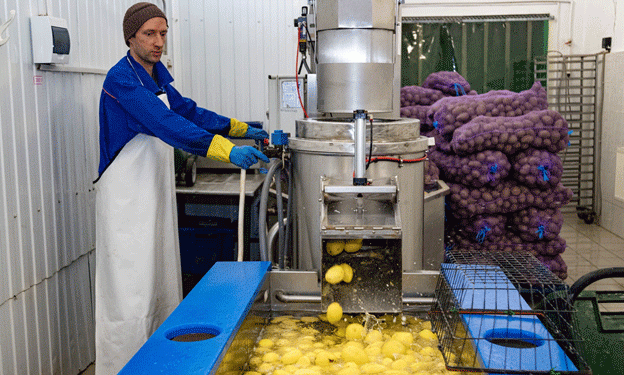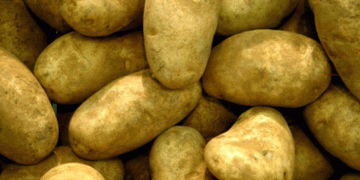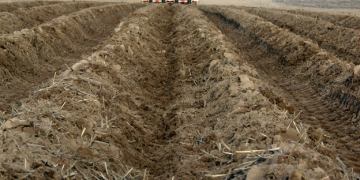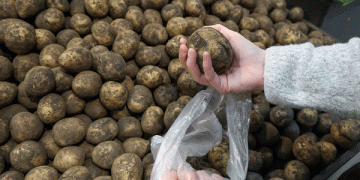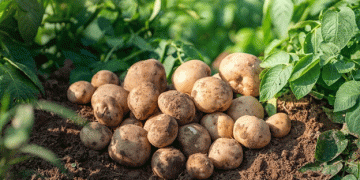The agricultural sector in Murmansk Region and across Russia is grappling with an unprecedented surge in potato prices. As of late October 2024, prices have risen by a staggering 92.29%, from 32.18 rubles per kilogram to 61.88 rubles per kilogram, according to Murmanskstat data. This price hike is part of a broader trend observed throughout the country, where potato costs have increased by an average of 54.7% since the start of the year.
Nationwide Trends and Declining Potato Harvests
The sharp rise in potato prices is tied to multiple interwoven factors. By October 10, 2024, Russia’s potato harvest stood at 5.6 million tons, roughly 15% lower than the same period in 2023. The drop in yield is significant, given that last year’s harvest reached a record 8.6 million tons, according to Alexey Krasilnikov, Executive Director of the Potato Union. The reduced output has put upward pressure on prices, as demand outpaces the available supply.
The weekly price increases since early October underscore the tightening market. Between October 8 and October 14, potato prices rose by 1.3%, followed by a 2% increase from October 15 to October 21, and another 3.1% increase from October 22 to October 28. These consecutive hikes highlight the escalating price dynamics as the harvest season concluded.
Key Factors Driving Price Increases
- Reduced Planting Areas: Farmers have reduced the acreage dedicated to potato cultivation due to economic uncertainties and unsustainable profit margins. The high costs associated with planting and maintaining large potato fields have made it difficult for producers to invest in expanded operations, especially after last year’s struggles to sell potatoes at profitable rates.
- Adverse Weather Conditions: Climate variability has significantly affected potato yields. Abnormal weather patterns, including unseasonable rains and temperature fluctuations, have hampered planting and harvesting. Sergey Korshunov, Chairman of the Organic Farming Union, emphasized that unfavorable weather has led to a noticeable reduction in marketable potato volumes.
- Rising Production and Logistic Costs: The cost of potato production has been driven up by expensive credit and rising fuel and transportation costs. Logistics challenges, both domestic and international, have compounded the issue. Transporting potatoes across Russia’s vast territories has become more expensive, contributing to higher consumer prices.
- Efforts to Stabilize Prices: Retail associations, such as the Association of Retail Trade Companies (AKORT), have implemented measures to soften price pressures on consumers. While these efforts may provide temporary relief, they do little to address the root causes of the rising prices.
Context and Economic Implications
The impact of these price increases is felt across the entire agricultural supply chain. Last year, potato farmers were forced to sell their harvests at near-break-even prices, with wholesale rates between 11 and 12 rubles per kilogram until May 2024. The lack of profitability has discouraged investment in future crops, contributing to the current supply crunch.
The situation in Murmansk is particularly severe, with potato prices almost doubling. This region’s heavy reliance on imported goods and long-distance transportation exacerbates cost inflation. While butter prices have also risen, prompting increased imports from Turkey, India, and Iran, potatoes remain a critical staple that cannot easily be substituted or imported at scale.
The surge in potato prices in Murmansk Region and across Russia reflects a complex web of issues, from reduced harvests and rising production costs to logistical hurdles and adverse weather. For farmers, this poses a dilemma between managing higher input costs and maintaining sustainable operations. For consumers, the economic burden is becoming increasingly challenging. Addressing these challenges will require coordinated action among farmers, government bodies, and the agricultural supply chain to ensure food security and market stability.
